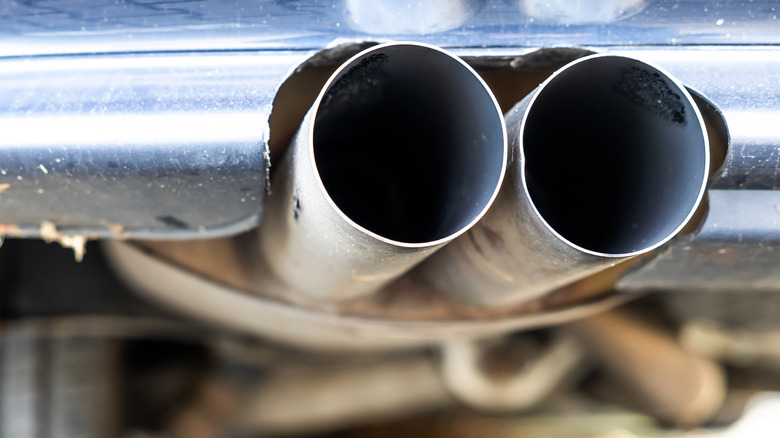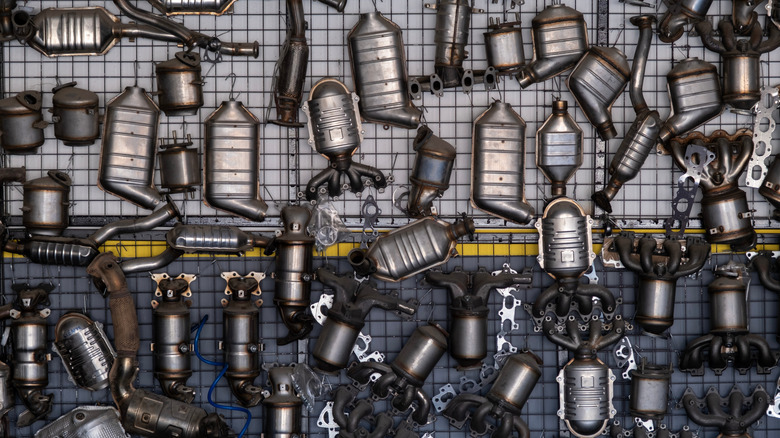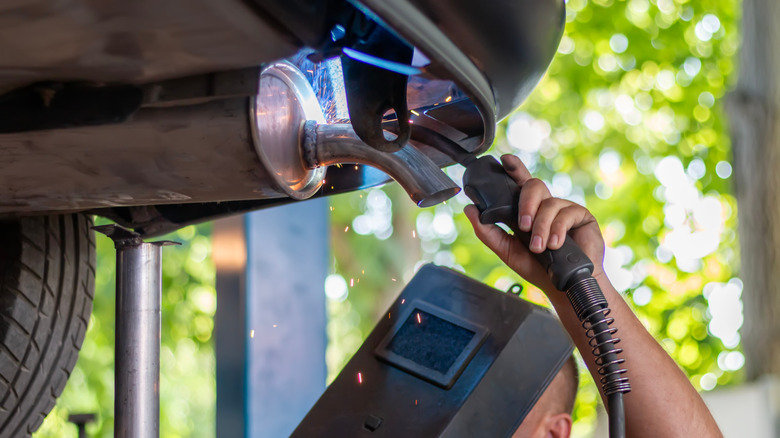Does A Muffler Delete Increase Your Vehicle's HP?
Often-times, the sky — and budget — is generally the limit when considering how to make a car go faster. There are two core components to doing this: decreasing weight and increasing power, both of which are positively affected when you remove that big lump of steel sitting on your exhaust pipe. Whether or not removing your muffle will actually grant you additional horsepower is deceptively complicated and scientific, but it will always boil down to airflow.
Your exhaust is similar to blowing air out of your mouth. Increase the diameter and you can move more air at once, albeit at a slower speed. Make it smaller, and you'll move less air but more quickly. The same principle applies with engines — the idea is to get the exhaust out of the combustion chamber as quickly as possible. Oftentimes, even high-flow mufflers tend to restrict airflow, so generally yes, straight pipes will move more air. However, there are some mufflers which actually offer similar or even better results than an identical length of straight piping in terms of volume of air moved.
In short, it's about how the muffler itself is constructed. While a resonator works as a sound tuner, the principle behind a muffler is that it acts as a sound dampener, eliminating excessive noise by manipulating sound waves through its internal architecture. This can effectively be accomplished in a number of ways, some of which don't necessarily restrict airflow whatsoever.
How exhaust systems work
The typical muffler isn't normally designed for performance applications, rather it's designed to quiet a car's engine note. Fitting a different muffler will create a different sound because of the geometry going on inside, which principally modifies sound waves. This concept relies on how interference works; if you want to eliminate sound, you create destructive interference, basically a positive and negative making a net neutral. In sound's case, this results in a flat wave — effectively, nothing. Alternatively, if you want to make a sound louder, you do the opposite and stack two of the same waves on top of one another, which has a multiplication effect.
The internal geometry of a muffler slows down air through the use of baffles, turns, kinks, and other obstacles. Slowing down the air means that there's some amount of a phenomenon called backpressure.
Backpressure is what happens when there's a buildup of pressure behind the blockage. Think of it like an exceptionally slow waiting line. Pretty soon, you'll have a queue going out the door if people come at the same rate. The same concept applies in an engine; pressure builds up to the point where residual exhaust gases stay in the cylinder for a time before fresh air pushes it out through valve overlap — when an engine's intake and exhaust valves are open at the same time. Thus, this restriction in airflow saps horsepower because air can't leave fast enough to be replaced by fresh air for the engine to combust.
Increasing power through airflow
Because of how this all works, the key concept here is to reduce backpressure as much as possible to generate the most horsepower. Broadly-speaking, getting rid of the muffler entirely will increase this airflow because there's no restriction; it's just a straight tube. However, certain muffler designs will actually improve airflow over even straight pipes.
Imagine you take a straight pipe and drill holes in it, then fit a bigger expansion chamber around that pipe. Air will flow through those holes because the inside of the pipe is high pressure, and the expansion chamber is low pressure; it will keep flowing until those two pressures equalize. Now what happens is that you effectively have a straight pipe again, just with less metal contacting the fast-flowing airstream as it runs through the main pipe. Less metal means less friction, and less friction means the air can travel faster. Companies like Magnaflow and Paradox have assembled this style of muffler, with one video showcasing a muffler with such a design demonstrating an increase of 30 CFM over a straight pipe.
Generally-speaking, most cars won't have this sort of muffler from the factory. Race cars use straight pipes, sometimes even side-exit exhaust systems. In those cases, yes, it's more economical and effective power-wise to just chop it off, as long as you don't mind the questionable legality. But it's ultimately about airflow, and evidently, not all mufflers restrict that.


